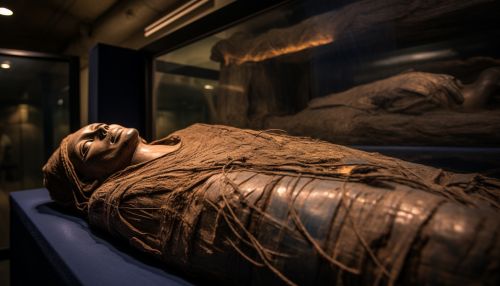Mummification
Introduction
Mummification is a process of preserving the body after death, which was most notably practiced by the ancient Egyptians. The process involves the removal of internal organs, treatment of the body with natural chemicals, and wrapping it in linen. This article will delve into the history, process, and significance of mummification in various cultures.
History
The earliest evidence of mummification dates back to the Chinchorro culture in South America around 5000 BCE. However, the process is most commonly associated with ancient Egypt, where it was practiced for over 3000 years from the Old Kingdom period to the end of the Ptolemaic Kingdom.


Process
The process of mummification in ancient Egypt involved several steps. The first was the removal of the internal organs, except for the heart which was believed to be the center of a person's being. The brain was removed through the nose using a special hook. The body was then cleaned and treated with a mixture of natron and other natural chemicals to dry it out. After this, the body was wrapped in linen, with amulets placed in between the layers for protection in the afterlife.
Significance
Mummification was not just a method of preserving the body; it was a deeply religious process for the ancient Egyptians. They believed that the body needed to be preserved for the soul to live on in the afterlife. The process was also a status symbol, with only the wealthy and powerful being able to afford the intricate process of mummification.
Mummification in Other Cultures
While ancient Egypt is the most well-known culture to practice mummification, it was also practiced in other parts of the world. The Chinchorro people in South America, for example, mummified their dead as early as 5000 BCE. In Asia, the Buddhist monks of Japan practiced a form of self-mummification known as Sokushinbutsu.
Modern Mummification
Today, mummification is no longer commonly practiced. However, it still holds a fascination for many, and the study of mummies provides valuable insights into the lives and cultures of ancient peoples. Modern science has also allowed for the creation of artificial mummies for research purposes.
